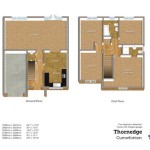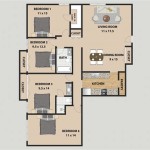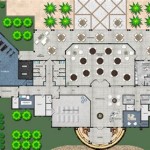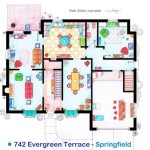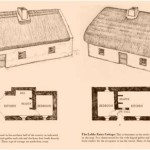House Floor Plan Editor: A Comprehensive Guide
A house floor plan editor is a software tool that enables users to digitally create, modify, and visualize architectural designs for residential properties. These editors range from simple, user-friendly applications designed for homeowners to more complex, professional-grade software used by architects and interior designers. A crucial aspect of the design process, using a house floor plan editor can improve accuracy, streamline communication, and reduce the time and cost associated with traditional drafting methods.
The functionality of a house floor plan editor extends beyond simply drawing walls. It encompasses a wide array of features that allow users to specify room sizes, add furniture and fixtures, experiment with different layouts, and generate detailed construction documents. These capabilities make them invaluable tools for both initial conceptualization and final execution of building or renovation projects.
This article will delve into the key aspects of house floor plan editors, exploring their functionalities, benefits, and diverse applications across various design stages. It will also outline the characteristics of different types of editors available, helping potential users make informed decisions about which software best suits their needs.
Key Benefits of Using a House Floor Plan Editor
Adopting a house floor plan editor within the design process offers several distinct advantages over traditional methods. These advantages can significantly impact the efficiency, accuracy, and overall satisfaction with a building or renovation project.
First and foremost, house floor plan editors provide a high degree of visual representation. Users can see their designs in 2D or 3D, allowing for a clear understanding of the space and how different elements interact. This visual clarity helps identify potential problems early in the design phase, preventing costly mistakes during construction. The ability to visualize the finished product also facilitates communication with contractors, builders, and other stakeholders, ensuring that everyone is on the same page regarding the design intent.
Secondly, using a digital editor facilitates ease of modification. Unlike paper-based blueprints, digital floor plans can be easily adjusted and updated. Walls can be moved, rooms can be resized, and furniture can be rearranged with a few clicks. This flexibility allows for rapid experimentation with different design options, enabling users to explore various layouts and find the optimal solution for their needs. The iterative design process becomes more efficient, leading to a better final product.
A third significant benefit is the ability to generate accurate measurements and specifications. Most house floor plan editors incorporate features that automatically calculate dimensions, areas, and volumes. This precision is crucial for creating accurate construction documents and ensuring that materials are ordered correctly. Accurate measurements also help in preventing errors during construction, reducing the likelihood of rework and delays.
Finally, many house floor plan editors offer collaboration features that allow multiple users to work on the same project simultaneously. This collaborative capability is particularly valuable for teams of architects, designers, and contractors who need to coordinate their efforts. Sharing design files and providing feedback becomes seamless, enhancing communication and streamlining the overall design process.
Essential Features of a House Floor Plan Editor
The functionality of a house floor plan editor is determined by the features it offers. While the specific features may vary depending on the software, some capabilities are essential for effectively creating and managing floor plans.
One of the most important features is the ability to draw walls, doors, and windows with precision. A good house floor plan editor should provide tools for creating straight lines, curves, and other shapes with ease. It should also allow users to specify the dimensions of walls, doors, and windows accurately. Furthermore, the editor should allow for the automatic creation of wall junctions and openings, simplifying the process of creating complex layouts.
Another critical feature is a library of pre-designed objects, such as furniture, appliances, and fixtures. These objects can be dragged and dropped into the floor plan, allowing users to quickly furnish and decorate their designs. The library should be extensive and include a variety of styles and sizes to accommodate different design preferences. Some editors also allow users to create their own custom objects or import them from other sources.
The ability to add annotations and labels is also crucial for creating clear and informative floor plans. Users should be able to add text, dimensions, and symbols to their designs to provide additional information about the space. Annotations can be used to identify room names, specify materials, and indicate the location of electrical outlets and plumbing fixtures.
Layer management is another essential feature, particularly for complex projects. Layers allow users to organize different elements of the floor plan into separate groups, making it easier to view and edit specific parts of the design. For example, walls, furniture, and electrical wiring can each be placed on a separate layer. The ability to turn layers on and off allows users to focus on specific areas of the design without being distracted by other elements.
Finally, the ability to export floor plans in various file formats is important for sharing and collaborating with others. Common file formats include PDF, DWG, and DXF. PDF files are ideal for sharing designs with clients and contractors, while DWG and DXF files are used for exchanging information with other CAD software.
Types of House Floor Plan Editors
House floor plan editors are available in a variety of types, each with its own strengths and weaknesses. The type of editor that is best suited for a particular project will depend on the user's needs and level of experience.
One type of editor is the online or web-based editor. These editors are accessed through a web browser and do not require any software to be installed on the user's computer. Online editors are typically more affordable than desktop software, and they are often easier to use. However, they may have fewer features and may require a stable internet connection to function properly. Examples of online floor plan editors include Planner 5D and RoomSketcher.
Another type of editor is desktop software. These editors are installed directly on the user's computer and offer a wider range of features than online editors. Desktop software typically requires a more powerful computer and may be more expensive. However, it offers greater control and flexibility, and it does not require an internet connection to function. Examples of desktop floor plan editors include AutoCAD Architecture and Chief Architect.
A third type of editor is mobile apps. These apps are designed for use on smartphones and tablets. Mobile apps are typically more portable and convenient than online editors or desktop software. They are often used for quick sketching and space planning. However, they may have fewer features and may be less precise than other types of editors. Examples of mobile floor plan editors include Magicplan and Floor Plan Creator.
Choosing the right type of house floor plan editor requires careful consideration of the project's scope, budget, and user's skill level. Online editors and mobile apps are suitable for simple projects and users who are new to floor plan design. Desktop software is better suited for complex projects and experienced users who require a high degree of control and precision.
Additionally, some software caters to specific needs. For example, some programs are designed with interior design in mind, with extensive catalogs of furniture and decorative elements. Others are optimized for architectural design, offering advanced features for creating detailed construction documents. Understanding the specific focus of a particular software can help users select the tool that best aligns with their project goals.
Ultimately, the best house floor plan editor is the one that meets the user's individual needs and preferences. Experimenting with different types of editors and taking advantage of free trials can help users find the perfect tool for their projects.

Floor Plan Maker

Free Floor Plan Designer

Floor Plan Creator Create Detailed And Precise Plans App For Android

Floor Plans Types Symbols Examples

Floor Plan Creator And Designer Free Easy App

Floor Plans Types Symbols Examples

Free Floor Plan Creator Edrawmax

Floor Plan Creator And Designer Free Easy App

Floor Plan Creator Planner 5d

Floor Plan Creator And Designer Free Easy App Simple Plans

